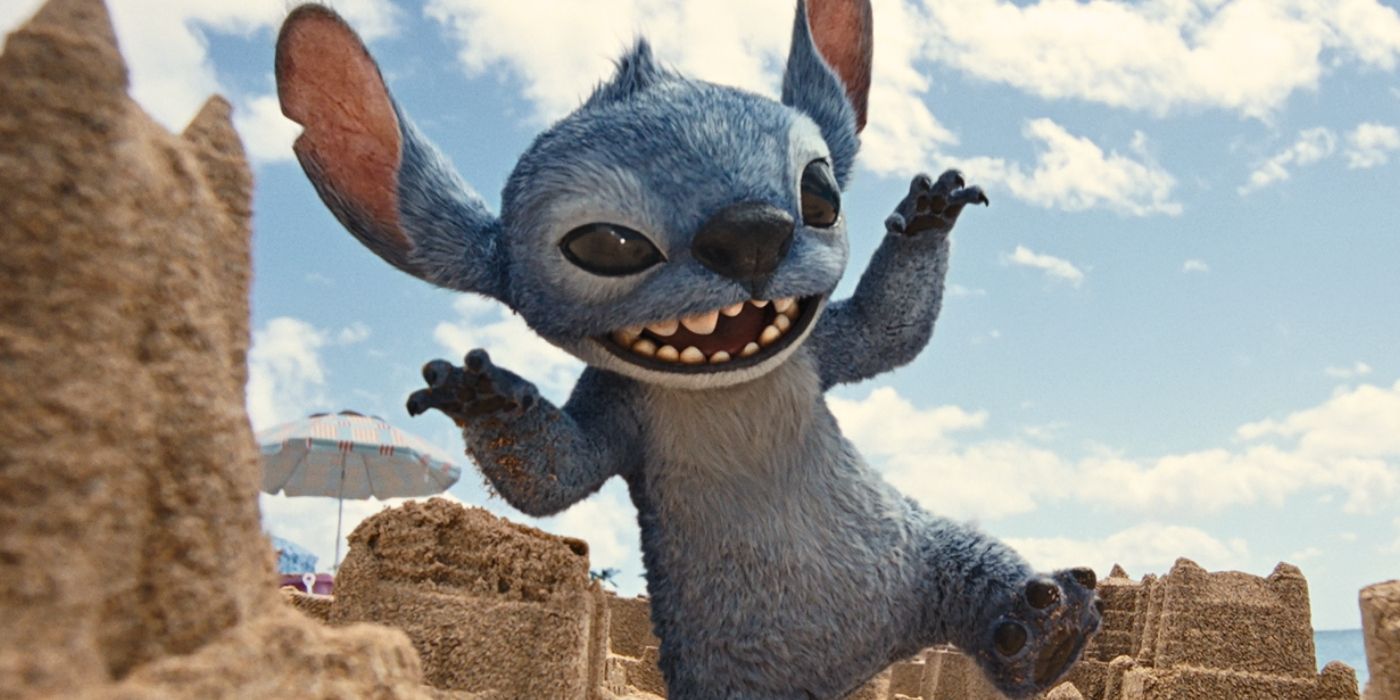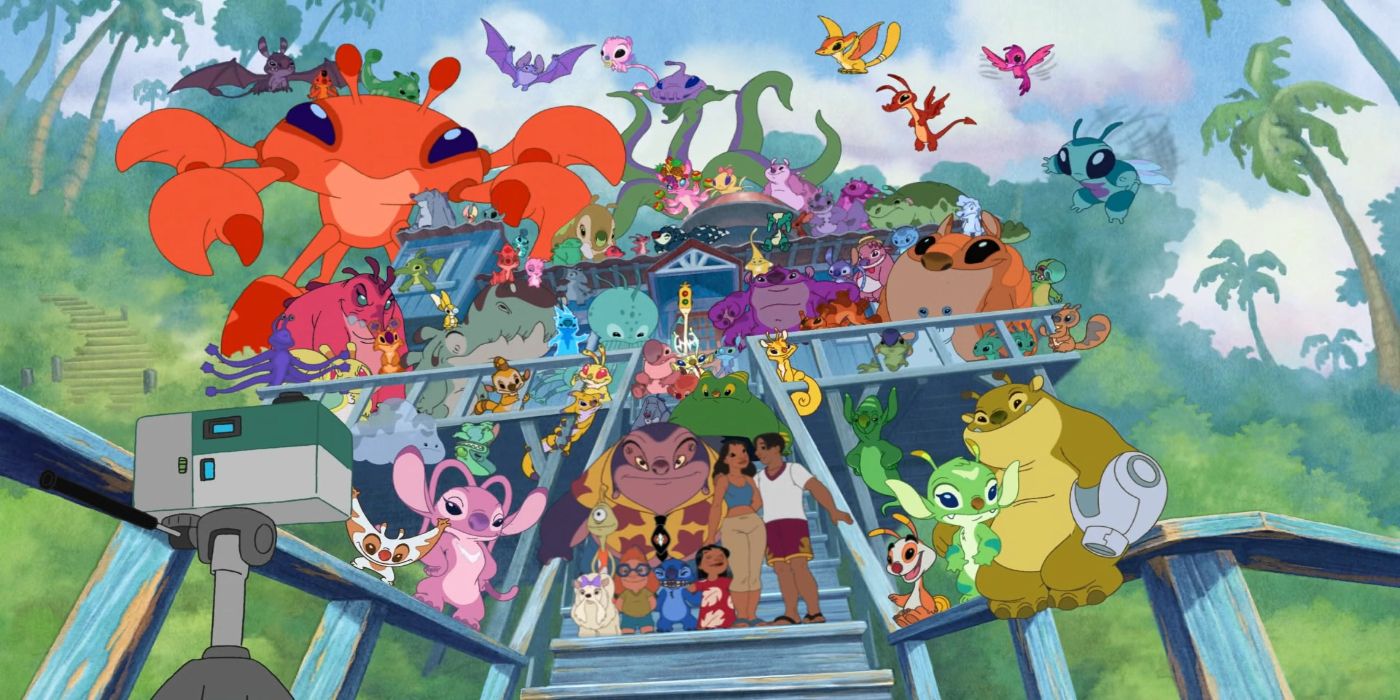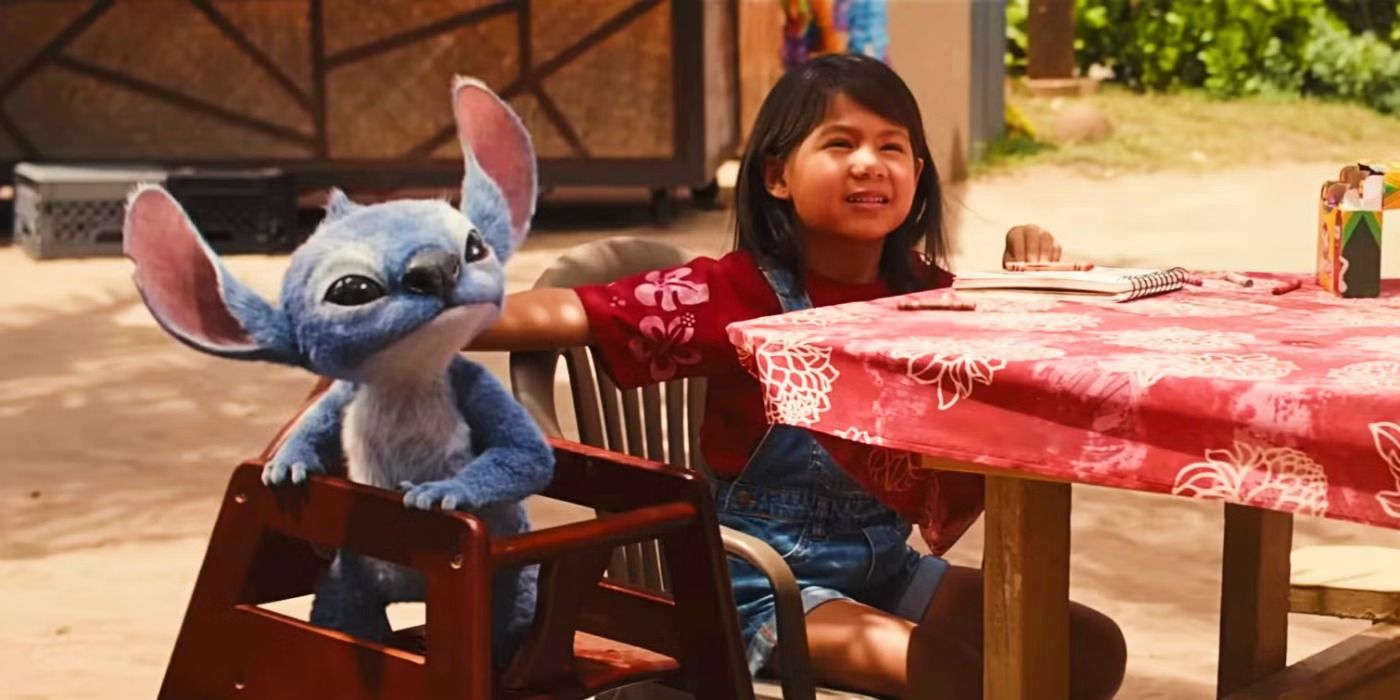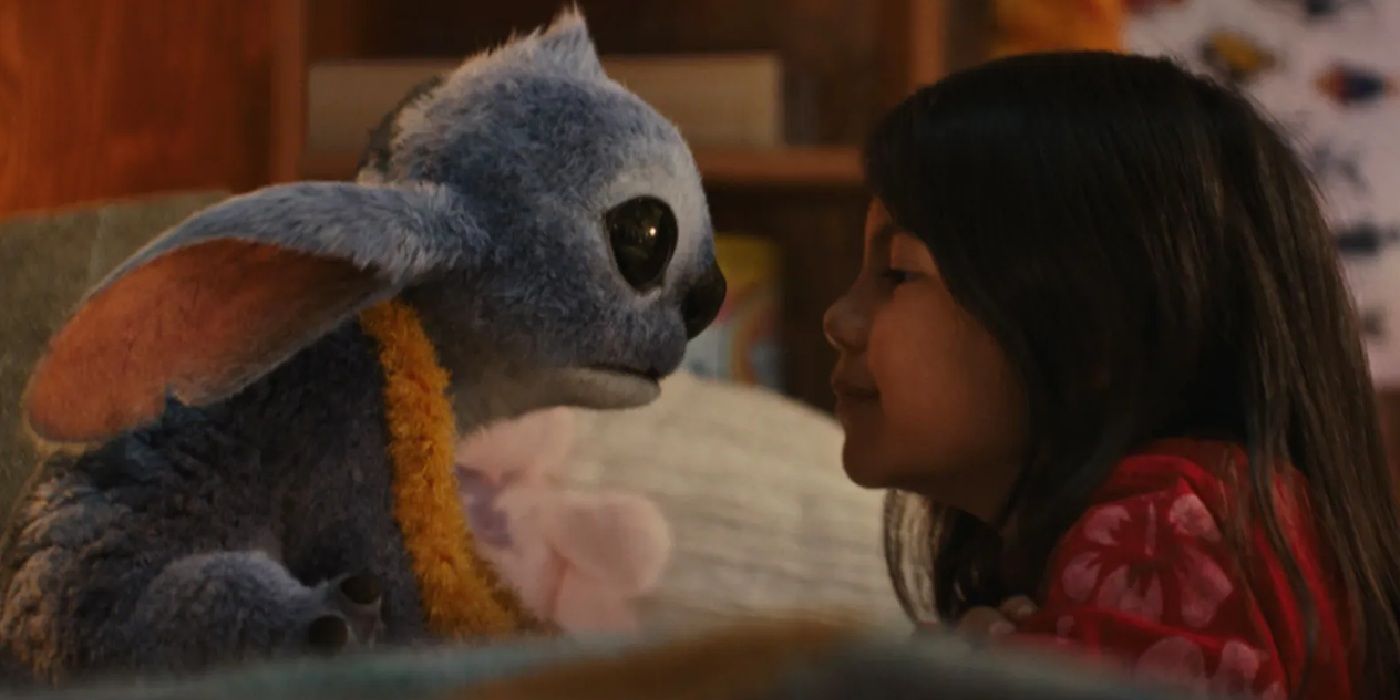
This article contains spoilers for Lilo & Stitch.
Lilo & Stitch stands out among Disney’s recent live-action adaptations, as it received a warm welcome from viewers instead of skepticism or criticism. Over the Memorial Day weekend, it garnered significant box office success. With Dean Fleischer Camp, who earned acclaim for his film Marcel the Shell with Shoes On, directing this project, anticipation was high. The movie has been well-received by audiences, yet critical responses have been somewhat divided. Even devoted fans have raised concerns about some of the film’s significant alterations.
In essence, when reimagining a cherished oldie like Lilo & Stitch, it’s only logical to introduce fresh elements to warrant a revamp. Unfortunately, the recent adaptation seems to have missed the mark in several ways – for instance, altering Jumba’s character into the main antagonist and denying him redemption, or the questionable finale where Lilo is allowed to live with another family against Nani’s wishes. It’s disheartening because there was ample room to build upon the original story, preserving its essence while offering a modern twist.
Pulling From the Expanded Material

Among all Disney properties, it seems that Lilo & Stitch is the most suitable candidate for a remake, given its potential to evolve into a prolonged film series. While Beauty and the Beast remains popular, there’s not much demand for Disney to revisit Belle’s Enchanted Christmas. Unlike these stories, Lilo & Stitch boasts an extensive franchise, such as three well-received direct-to-video sequels, a cherished animated series featuring additional experiments (Stitch’s “cousins”), and spin-offs set in Japan and China, where Stitch integrates with new families. Essentially, Lilo & Stitch offers a wealth of material that could be reimagined, offering room for significant changes.
In the final movie, the only nod to the broader mythology occurs when Jumba searches through his computer, revealing sketches of popular experiments like 624/Angel and 625/Reuben, as well as a suggestion of 627 that resembles Leory from the animated film “Leroy & Stitch”. Although the movie would have benefited by focusing solely on Stitch and saving the other experiments for a potential sequel (which, based on box office performance, seems likely), the choice to replicate the opening scene of the original could have been extended. This extension could have drawn from the scene in “Lilo & Stitch 2: Stitch Has a Glitch” where the Galactic Federation of Planets captures Jumba after creating Stitch.
In the context of the remake, incorporating Easter eggs and establishing a unique opening would have been beneficial instead of hurrying through the original, which currently appears disjointed and strangely paced. If Gantu had to be omitted but a villain was still required, why not introduce Dr. Jacques von Hämsterviel, Jumba’s financier? This way, Jumba wouldn’t inexplicably become a villain, while also drawing from the extended material to create a villain who logically seeks to capture Stitch.
In a somewhat unusual comparison, considering how different their themes and target audiences are, Lilo & Stitch could learn from the approach taken by 2009’s Friday the 13th. This movie amalgamated key aspects from the first four installments in the series to create a unique film, yet one that retained the essence of what people typically associate with the Friday the 13th franchise. If Lilo & Stitch had borrowed the fundamental plotline from the 2002 animated movie but also incorporated elements from subsequent releases to enhance its narrative and characters, it would have resulted in a remake that not only paid homage to the original but also expanded upon it.
Social Commentary That Could Have Been Added Back In

The film “Lilo & Stitch” is frequently recognized as one of Disney’s more intricate productions. With its rebellious alien character, it carries a distinct punk-rock atmosphere. Although this might appear unusual within the context of a children’s Disney movie, upon closer inspection, Lilo & Stitch seems to express strong viewpoints about how certain individuals, specifically white tourists, tend to treat Hawaii as a tourist attraction, often disregarding and commodifying the island’s native inhabitants. This theme is subtly addressed in a cut scene where a tourist asks Lilo if she speaks English, to which a woman responds, “A real Hawaiian native.” Lilo then plays a prank on the tourist, scaring them. When social worker/CIA agent Cobra Bubbles observes this, Lilo justifiably tells him, “If you lived here, you would understand.” In simpler terms, this animated film seems to critique the way tourists sometimes disrespect and objectify the native people of Hawaii.
In an attempt to portray social workers in a more favorable and sensitive light, the remake unintentionally dulled some of the sharp social criticism present in the original Lilo & Stitch. While it may appear that the government agency tasked with protecting children from abusive situations is benign, it overlooks one of the original film’s hidden themes. The separation of Nani and Lilo by a U.S. government agent serves as a microcosm for America and Europe‘s overthrow of Queen Liliʻuokalani, much like how her song “Aloha Oe” is sung to Lilo before their separation. Historically, similar acts have been carried out by colonial powers, including the United States government, which seeks to separate this family. Thus, the remake inadvertently softened some of the original film’s biting critique on the effects of colonization and government intervention.
Was it likely that the movie “Lilo & Stitch” would incorporate subversive elements and become a film with strong political commentary? Probably not, as Disney, at least in terms of tourism, benefits from people visiting Hawaii. They own Aulani, a Disney Resort & Spa on Oahu’s island, which opened in 2011. However, being a large corporation doesn’t necessarily prevent filmmakers from tackling broader issues.
Despite its flaws, the 2019 version of Dumbo cleverly portrayed Michael Keaton’s character as a blend of Thomas Edison and Walt Disney, a subtle nod that somehow slipped past the radar. Black Panther surprised many by addressing racial themes in unexpected ways for a Disney production. Andor, on the other hand, dared to use the word “genocide” at a time when even some real-life senators shy away from doing so. It’s important to remember that behind every Disney production lies the creativity and individuality of its makers.
Dig Into the Emotional Drama

Having witnessed Marcel the Shell with Shoes On, I couldn’t help but get thrilled at the idea of Dean Fleischer Camp directing the remake of Lilo & Stitch. I was hoping it would infuse that charming, low-key A24 aesthetic with heartfelt sincerity into the cherished Disney tale. Although the final product does showcase a hint of that spirit, it falls short in truly embracing it wholeheartedly.
What’s intriguing is that, despite the extended runtime of Lilo & Stitch, the filmmakers don’t delve any deeper into Lilo and Nani’s mother and father compared to the original. It seems wise to concentrate on the bond between the sisters and their newfound ‘ohana, but I feel there’s potential for further exploration here rather than focusing on a CIA plot to capture Stitch.
In the original movie, there was an intriguing deleted scene that could have deepened the connection between Lilo, Nani, and their parents, while also adding a moving dimension. This scene showcases Lilo presenting Stitch with Pudge, her special fish who controls the weather. Although not explicitly mentioned in the film, it is hinted at that Lilo’s parents perished in a storm, which explains her affinity for a weather-controlling creature. In this deleted scene, Stitch’s destructive behavior unwittingly results in Pudge’s demise, causing sorrow for Lilo. She tells him, “You don’t let your family die,” and “I needed you” when he fails to save Pudge. This incident makes Stitch understand the gravity of his actions and grasp the concept of death, marking the start of his path towards redemption. This scene could have significantly enhanced the emotional resonance of the new film, much like how Camp’s “Marcel the Shell With Shoes On” did.
Among all Disney live-action remakes, Lilo & Stitch stood out as the most intriguing to adapt due to its potential for a unique visual transformation. If Lilo & Stitch had opted for a more distinctive visual style, perhaps incorporating handheld camera work similar to Marcel the Shell with Shoes On or Beast of the Southern Wild, some of its most substantial changes might not appear as stark because it would represent such a fresh perspective on the source material. However, the final product now finds itself in an unusual position, attempting to preserve certain elements and scenes from the original while also significantly altering others. This results in a tug-of-war between two distinct versions of Lilo & Stitch, each capable of being good on their own but together, they form a less satisfying amalgamation of both formats.
Lilo & Stitch could arguably surpass Disney’s least successful remake. Compared to 2022’s Pinocchio and 2010’s Alice in Wonderland, it offers more entertainment value. However, given the prestige of its predecessor and the wealth of content available for expansion, enhancement, and reinterpretation, some may find it underwhelming. The current adaptation is yet another Disney live-action remake that leaves viewers yearning to revisit the original.
Read More
- Who Is Harley Wallace? The Heartbreaking Truth Behind Bring Her Back’s Dedication
- Basketball Zero Boombox & Music ID Codes – Roblox
- 50 Ankle Break & Score Sound ID Codes for Basketball Zero
- TikToker goes viral with world’s “most expensive” 24k gold Labubu
- 50 Goal Sound ID Codes for Blue Lock Rivals
- Revisiting Peter Jackson’s Epic Monster Masterpiece: King Kong’s Lasting Impact on Cinema
- 100 Most-Watched TV Series of 2024-25 Across Streaming, Broadcast and Cable: ‘Squid Game’ Leads This Season’s Rankers
- League of Legends MSI 2025: Full schedule, qualified teams & more
- KFC launches “Kentucky Fried Comeback” with free chicken and new menu item
- Which Is the Best Version of Final Fantasy IX in 2025? Switch, PC, PS5, Xbox, Mobile and More Compared
2025-05-24 21:37